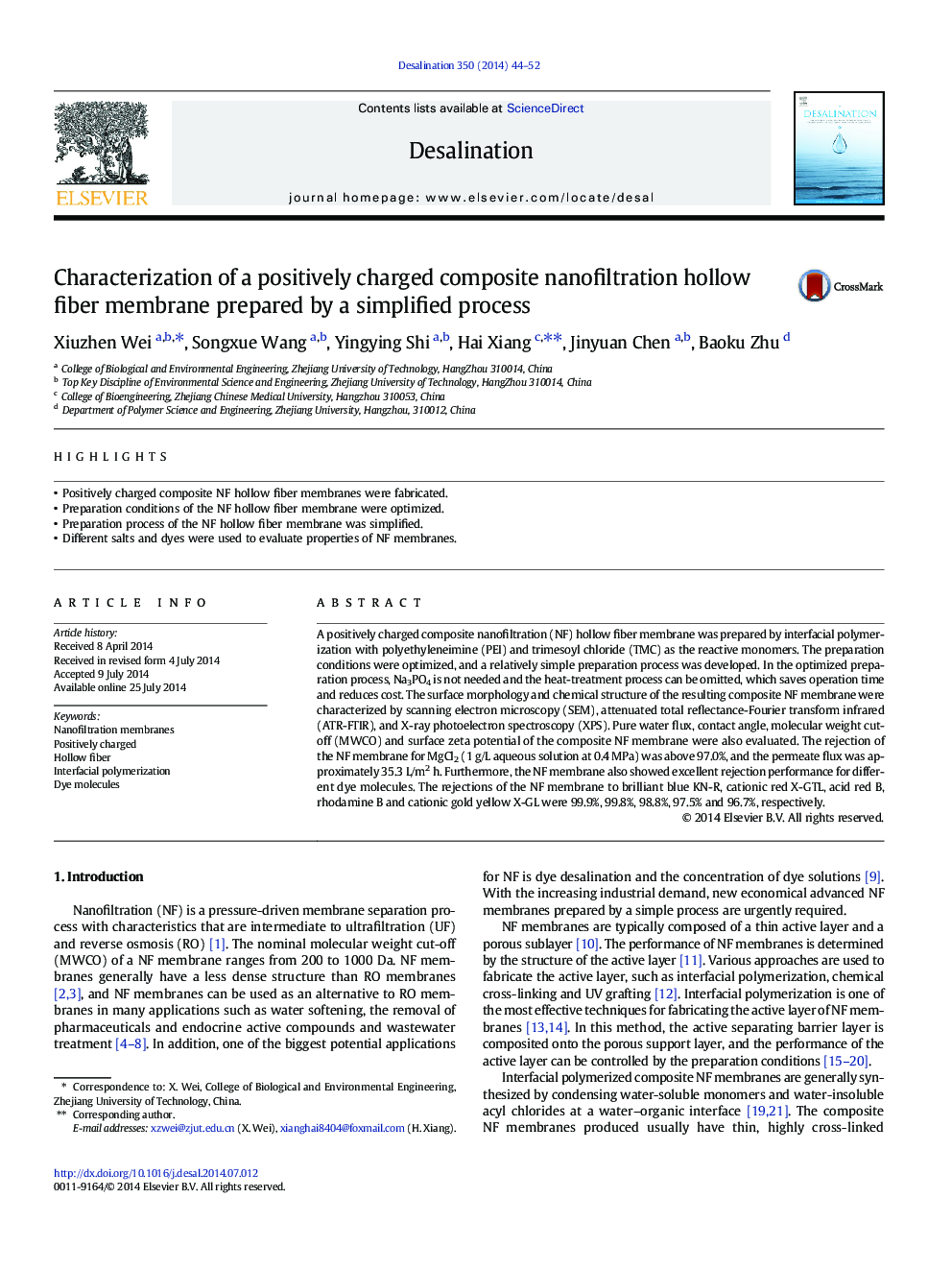| Article ID | Journal | Published Year | Pages | File Type |
|---|---|---|---|---|
| 623370 | Desalination | 2014 | 9 Pages |
•Positively charged composite NF hollow fiber membranes were fabricated.•Preparation conditions of the NF hollow fiber membrane were optimized.•Preparation process of the NF hollow fiber membrane was simplified.•Different salts and dyes were used to evaluate properties of NF membranes.
A positively charged composite nanofiltration (NF) hollow fiber membrane was prepared by interfacial polymerization with polyethyleneimine (PEI) and trimesoyl chloride (TMC) as the reactive monomers. The preparation conditions were optimized, and a relatively simple preparation process was developed. In the optimized preparation process, Na3PO4 is not needed and the heat-treatment process can be omitted, which saves operation time and reduces cost. The surface morphology and chemical structure of the resulting composite NF membrane were characterized by scanning electron microscopy (SEM), attenuated total reflectance-Fourier transform infrared (ATR-FTIR), and X-ray photoelectron spectroscopy (XPS). Pure water flux, contact angle, molecular weight cut-off (MWCO) and surface zeta potential of the composite NF membrane were also evaluated. The rejection of the NF membrane for MgCl2 (1 g/L aqueous solution at 0.4 MPa) was above 97.0%, and the permeate flux was approximately 35.3 L/m2 h. Furthermore, the NF membrane also showed excellent rejection performance for different dye molecules. The rejections of the NF membrane to brilliant blue KN-R, cationic red X-GTL, acid red B, rhodamine B and cationic gold yellow X-GL were 99.9%, 99.8%, 98.8%, 97.5% and 96.7%, respectively.
